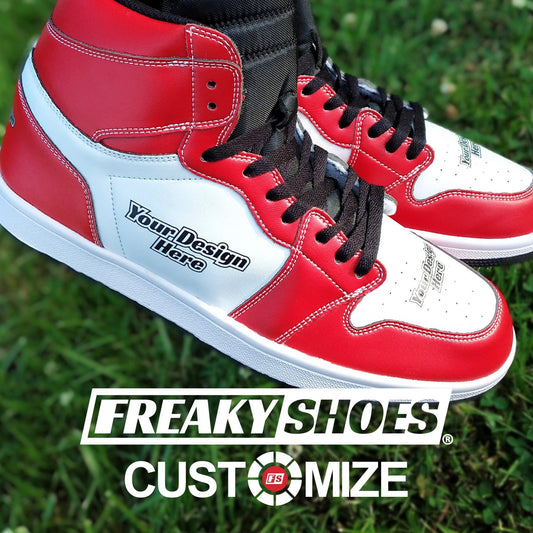Have you ever wondered, “Can you use watercolor on a normal canvas?” The answer might surprise you! It’s not as easy as painting on paper because the canvas isn’t made to absorb watercolors.
Without the right steps, your masterpiece might end up in a “puddly” mess!
But don’t worry. There’s a solution!
To use watercolor on a normal canvas, cover it with a watercolor ground. This makes it absorb water better. Then, use soft brushes and start painting.
Want more info? Here, we are explaining everything about using a watercolor on a normal canvas. So, stick to the end.
Key Points
- Watercolor doesn’t absorb well on regular canvas, which is why you should be careful.
- Watercolor ground helps canvas absorb watercolors better.
- Soft brushes and high-quality paints are essential.
- You should protect your finished painting with a fixative spray.
- Watercolor canvas is a great alternative to regular canvas.
Can You Use Watercolor on a Normal Canvas?

Yes, you can use watercolor on a normal canvas, but it’s tricky. Normal canvas isn’t made for watercolor, so the paint doesn’t stick well. It can puddle or slide off.
But if you prepare the canvas with watercolor ground, you can make it work much better.
Why Doesn’t Watercolor Work Well on Normal Canvas?
Normal canvas doesn’t soak up water like watercolor paper does. When you paint on it, the water just stays on top of the surface. This makes it hard to control the paint.
But why does it happen?
Well, canvas is usually designed for thicker paints, like acrylic or oil. These paints sit on the surface and dry there. Watercolor, on the other hand, needs to be absorbed.
So, when you use watercolors on a normal canvas, the paint kind of floats. This makes it harder to get the look you want.
What’s the Difference Between Watercolor Paper and Canvas?
Watercolor paper is made to soak up water. It’s thick and has texture, which helps control the flow of the paint. This texture grabs onto the paint, which lets you do your work.
On the other hand, normal canvas is smooth and doesn’t soak in water. It’s made from fabric and covered with gesso, which makes it smooth and less absorbent.
That’s why watercolor doesn’t work well on it without preparation. The water stays on top, making it hard to control the paint.
To know more, we’ve made a complete guide on how you can make custom shoes.
How to Use Watercolor on a Normal Canvas?
To use watercolor on a normal canvas, first, cover the canvas with a watercolor ground. This makes it absorb water better. Then, use soft brushes and start painting in light layers.
Here are the steps:
Step 1: Prepare the Canvas
The first thing you should do is prepare your canvas. Watercolor ground is a must if you want your watercolors to stick to the canvas. Without it, the paint won’t absorb properly, and you’ll struggle to get the effects you want.
To prepare the canvas, do the following:
- Brush the watercolor ground all over it. Make sure you cover every part evenly.
- Let it dry completely.
- Depending on the size of the canvas, you might need to apply more than one coat. Once it’s dry, your canvas will be ready for watercolor.
Step 2: Use the Right Brushes
When you’re painting with watercolors, the type of brush you use matters a lot. For canvas, you’ll want to use soft, high-quality brushes. They hold more water and release the paint smoothly.
Natural bristle brushes, like sable brushes, are great because they help you control the water and paint.
Step 3: Start with Light Layers
Watercolor painting is all about building up layers. On canvas, this is even more important because the surface is smooth. If you try to add too much paint at once, it can start to “run.”
So, start with thin, light layers of paint. Wait for each layer to dry before adding more. This way, you can control the colors and build them up slowly.
If you try to rush it, the water might cause the colors to bleed together, and you could lose the details you’re working on.
Step 4: Use a Fixative to Protect the Painting
Once your painting is done, you’ll want to protect it. Since canvas doesn’t absorb watercolor like paper does, the paint can easily smudge or rub off.
To stop this from happening, use a spray fixative.
A fixative will seal the paint in place and protect it from smudging or fading over time. Make sure you pick one that’s safe for watercolors.
Moreover, spray it evenly across the whole painting. This will help your artwork last longer.
Tips for Using Watercolor on a Normal Canvas

To use watercolor on a normal canvas, you should follow some tips.
1. Choose High-Quality Paints
Using artist-grade watercolor paints is key. Look for paints with strong, vibrant pigments, as these work best on non-traditional surfaces like canvas.
Cheaper paints tend to be duller and don’t stick as well, especially on canvas. Good-quality paints will give you richer colors that stay on the surface.
2. Wet the Canvas First
Start by misting the canvas lightly with water. This helps the paint spread more smoothly and keeps it from drying too quickly.
Lightly spray water across the canvas surface or use a damp brush to moisten it.
3. Experiment with Effects
Canvas can give you fun, unique textures. Try different techniques like:
- Dry Brushing: Use a dry brush with little paint to create rough, textured strokes. This gives a more gritty look, especially on canvas.
- Splattering: Flick a brush loaded with paint to create small droplets. It adds energy and randomness to the piece.
- Glazing: Apply a thin layer of paint, let it dry, then add another layer on top. This builds up color slowly and can give a soft, dreamy effect.
4. Avoid Overworking the Paint
Watercolor on canvas can lift off if you scrub. Try to avoid reworking sections repeatedly, as this can damage the paint layer. Once you lay down paint, let it dry before adding more, or risk the colors getting muddy.
5. Scraping
Scraping is a cool way to add texture. After painting a layer, take a flat tool like a palette knife or an old credit card and gently scrape off some of the paint. This shows the colors underneath. It can also add sharp lines or textures that make your painting more exciting.
6. Stippling
Stippling is all about tiny dots. Use the tip of a brush or a sponge to make small dots or dabs of paint. This is great for adding texture, shading, or patterns—like sand, pebbles, or even fur.
7. Sponge Painting
Sponge Painting creates natural-looking textures. Just dip a natural sponge in paint and dab. This works well to make things like rocks, leaves, or clouds. Using a sponge helps you create these effects without needing to paint every detail.
What Are Some Alternatives to Normal Canvas for Watercolor?
If regular canvas isn’t working for you, try alternatives like:
- Watercolor paper
- Watercolor canvas
- Wood panels.
These surfaces are made to handle watercolors better.
Alternative 1: Watercolor Paper
Watercolor paper is the most popular surface for watercolor painting. It’s thick, absorbent, and has a texture that helps the paint stick and flow smoothly.
The best part? It’s designed for water, so the colors stay vibrant.
Also, note that watercolor paper comes in different textures like cold-pressed. It is a bit bumpy, and hot-pressed. You can also choose different weights (thickness) depending on how much water you plan to use.
Alternative 2: Watercolor Canvas
Watercolor canvas is designed just for watercolor paints. It’s similar to regular canvas but comes prepped to handle water. The surface is textured and absorbent, so you can paint just like you would on paper.
If you like the feel of canvas but want to use watercolors, this is a great choice. You won’t need to worry about prepping it with watercolor ground because it’s already made for this purpose.
Alternative 3: Wood Panels
Wood panels are another option for watercolor artists. They give you a solid surface to work on, and they won’t warp when wet like paper can. You’ll need to coat the wood with watercolor ground before painting. But once it’s prepped, you can create some really cool effects.
Wood panels are sturdy and durable, making them a great choice for long-lasting artwork.
Alternative 4: Clayboard
A clayboard is a surface made from a layer of clay over a hardboard. It’s smooth and absorbent, which makes it great for watercolors. You can also erase or lift the paint from clay board, making it easier to fix mistakes.
Clayboard is a fun surface to experiment with because it handles watercolors differently than paper or canvas. It’s a great choice for artists who want to try something new.
Conclusion
When it comes to using watercolor on a normal canvas, preparation and technique are key. Remember this:
That’s all.


















